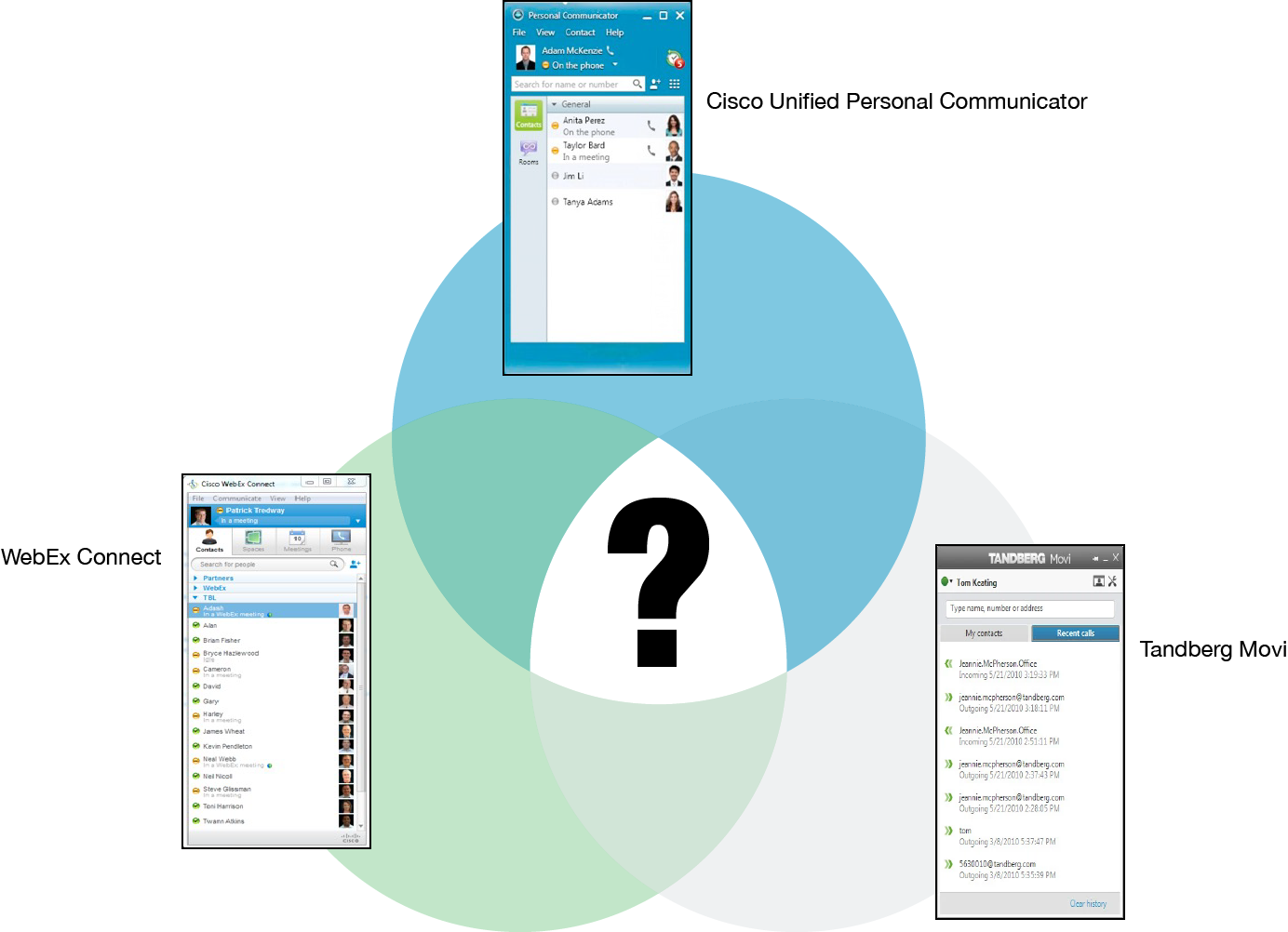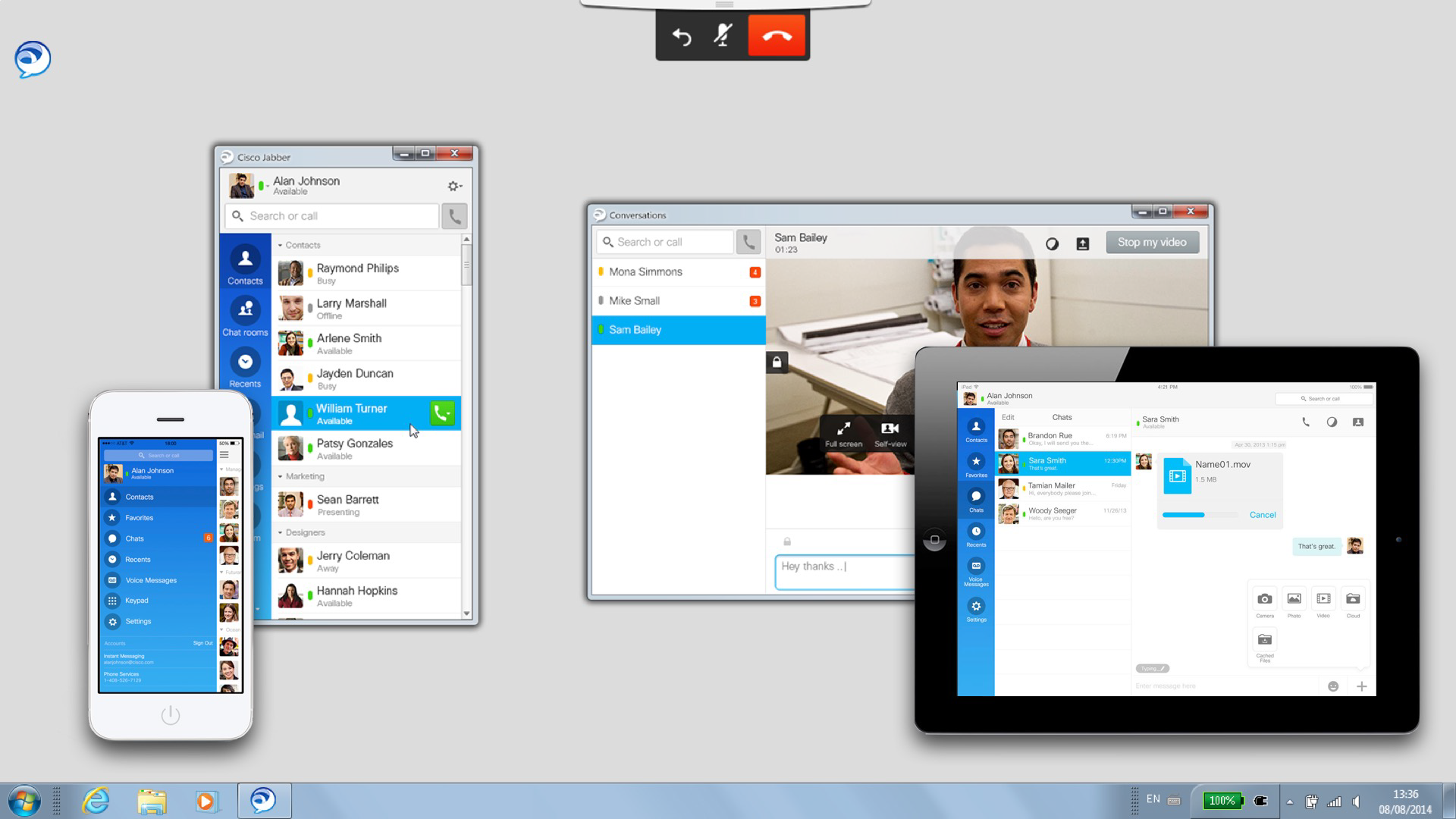Goal
Customers achieve a singular, superior employee communication experience so that productivity and satisfaction increase while system complexity decreases.

Opportunity
Take a fractured portfolio of multiple enterprise-grade unified communication products and distill them into a single product offering to:
- Deliver a single, coherent user experience.
- Simplify our product offering to streamline sales and customer messaging.
- Maximize internal resources by focusing on a single product rather than multiple SKUs.
- Streamline backend compatibility and third-party integration opportunities.

Solution
As the lead user experience stakeholder on a cross-functional and cross-product team, I was responsible for distilling a wide range of features and customer use cases into a single product design. Working with engineering and product management colleagues, I helped craft a target product strategy that defined a meaningful and rational path forward. Leveraging customer research and bringing together subject matter experts from each of the individual product teams, I was able to form a single, integrated design organization focused on delivering the best, single possible product for our customers that could also grow market share by leapfrogging the competition.

Outcomes
- Successfully integrated three separate unified communication software clients with different product teams, feature sets, and customer install bases into a single, cohesive, cross-platform product satisfying all required customer-validated use cases.
- Within two years of the initial launch, the overall product install base increased by almost 15% and surpassed the nearest competitor to become the leading enterprise unified collaboration client with the largest product class deployment.
- Contributed to company-wide design system development, ensuring the new product’s workflow and UI needs were included and helped drive many cross-product considerations.
- Collaborated with the marketing team to develop new branding and messaging around the product release to build customer interest and simplify user migration.

Accomplishments
- Integrated UX as an equal partner in the product development process. I joined a heavily engineering-focused culture where UX was treated as a service. I changed how design was integrated into the product development process to be an equal partner with development and product management. I made design team participation in all planning activities mandatory and required UX sign-off as a release pre-requisite.
- Built a culture where user research is mandatory. All customer data was previously derived from sales and support functions. I introduced end-user-focused quantitative and qualitative research as the foundation for all major feature implementations. In addition, I opened research activities to other functions to demonstrate and prove the value of unbiased testing mechanisms.
- Implemented a successful transition to Agile product development. I was a founding member of the organization’s Agile transition, representing the UX function. My contributions helped move the internal perception of Agile as merely an engineering methodology to a holistic end-to-end product planning and development process. In addition, I also introduced a range of UX analytics and KPIs as additional measures of success.
- Turned around team morale. I inherited a team frustrated with their role and lack of participation in meaningful planning activities. After many internal and cross-functional discussions, I reorganized the design team to be more reflective of the engineering and product management structure, allowing for consistency in team collaboration. This empowered the UX team to push back when challenged with top-down support and by opening the design process to make it more inclusive.
What I learned
- There is a distinction between what customers want and what end-users need. A tension exists between the business case and usability considerations that must be resolved collaboratively. Failing to achieve a balance is the difference between a product no one wants to buy and one no one wants to use.
- Transparency is how you build trust. Keeping your data, process, and work in progress under wraps may accelerate design team velocity in the short term but will undermine progress in the long term. Pull back the curtain to make design less mysterious and more accessible. The most productive collaboration happens out in the open.
